MAYA * AZTEC ASTROLOGY REPORT
Prepared for 1CIMI
DAY-SIGN: 1-Transformer (Death)
YEAR: South-11
13-DAY PERIOD: 1-Transformer (Death)
NIGHT LORD: 8
VENUS PHASE: Evening Star
Page 1
THE ASTROLOGY OF TIME
The ancient Maya and Aztec astrologers studied the mysterious influence of the rhythms of the sky on earthly life. Everyone knows the Sun rises and sets every day -- this is the basic rhythm of life around which we set our clocks and calendars. What the ancient astrologers discovered was that other time cycles existed that were multiples of this basic day cycle. This fact was discovered about 100 years ago in Europe and these cycles (there are many of them) are now called biorhythms. The most important time cycles in ancient Mayan and Aztec astrology are those of the day, 9-days, 13-days, and 20-days. Additionally, years are counted also, in groups of 4 and 13. Each day is then part of several other cycles, so no two days are exactly the same. Your Maya/Aztec horoscope below shows exactly where in each of the cycles you were born. Each category below examines a specific cycle and a specific aspect of your personality. Keep in mid that our personalities are complex and contain many contradictions. All of us present a different "face" depending on who we meet. The delineations below will reflect this, but they will also give you a clear picture of who you really are. The true value of astrology lies in self-knowledge, the first step to wisdom.
YOUR MOST PERSONAL TRAITS -- THE DAY-SIGN OF YOUR BIRTH
Here are your strongest and most obvious personality traits. The delineation below describes who you are and how you appear to others, at least on the surface. In Aztec astrology this part of is your horoscope is your Tonalli, or Day-Sign, the form bestowed upon you by the Sun. You tend to have, in good measure, what might be called political awareness. You are concerned with what is happening in the world, or in your own neighborhood, and you like to feel that you can make a difference. You are cooperative and rarely allow your ego to get in the way of progress toward the collective goals you believe in. If you do make politics a career, you will not hesitate to align yourself with someone more powerful or influential than yourself. You take all kinds of responsibilities very seriously.
Page 2
You can be depended on to do the best job you can, but because you generally usually avoid very heavy responsibilities whenever possible, or leave them to others, you may not be completely prepared for crises that may occur. Obligations to others, and a sense of duty, tend to dominate your thinking and choices in life. It is possible that your life could become so bound up with the lives of others that it may be difficult for you to say where your self-interest begins and obligation to others ends. Because you are so polite and hesitant to speak your true feelings, you tend to give in to others more often than may be
necessary or even reasonable. You do have a tendency to form partnerships with rather strong individuals. The actual power dynamics of these relationships may not be clear on the surface, but underneath there is usually a good deal of psychological manipulation, probably by both parties. In many cases you assume a passive, victim-like role and allow your partner to appear to be the leader. However, you hold on to a good deal of the power and often influence events from behind the scenes, or indirectly. You intuitively know that life is a mystery and you may have learned early on that faith can carry you beyond the limits of your understanding. In many respects, you live on trust and belief in your future and often allow others, rather than yourself, to shape the world around you. Maybe you simply do not want to know too much and carefully avoid exposing yourself to many things. This may be in part due to your associations with powerful others whose decisions and choices affect you profoundly. Religion may appeal to you, especially organized, traditional religion, or possibly a metaphysical philosophy of life that embraces reincarnation. These are powerful forces that can guide you through life and give it meaning. You often experience life as a personal sacrifice of some sort, and your beliefs give your sacrifices meaning. Religion, or your own brand of spirituality, also plays into your sense of obligation toward others and the community.Intellectually, you are conservative and traditional, or at least lean in that direction. Once you focus on and become attached to a set of ideas and beliefs, you stay with them, perhaps for security reasons. You are not always open to new ideas, though you may politely listen to whoever challenges your beliefs. You may also struggle with decision making at times, this being related to the issue of giving
Page 3
up the security, both intellectual and material, you already have. Most persons born under this day-sign are very sensitive to causes. These may be those of the poor and needy, the oppressed, and the sick, and also those of the environment and quality of life. You are big-hearted but you also have a strong sense of responsibility and duty. Although you have a real feeling for and support causes, real "down and dirty" activism is not always your style. You often prefer to support the cause, but let others take the action. You have materialistic or practical inclinations. If you become committed to making money you will certainly know what to do with it once you get it. You also tend to be quite security conscious. You invest your money carefully, often in real estate, and use it wisely. This may be due in part to experiences with poverty, or at least a limited income, early in life. You are not known to be a great risk taker, except maybe on some political issues, and you prefer a life of domestic security to that of adventure. You can be very attached to home and family. While you may aspire to be wealthy, you don't pretend to be, and if you have wealth, others would never know it. You prefer to cut a low profile in life. The actual experience of death, whether personal, in the family or with a close friend, may have left a strong mark on you. Talking about such experiences is difficult for you and you prefer to avoid the subject. Because of this tendency to keep strong emotional experiences to yourself, you are often regarded by others as hard to really know and emotionally distant. But you are still very social, and to complicate things further, you tend to manifest these two distinctly different personalities depending on the environment you are in, or on how much you've had to drink. Often the real problem here is one of inhibitions. You have conservative and repressive tendencies and may need to lighten up now and then for the sake of your own mental health. Some persons born on this day have both a public and a private personality and this is sometimes reflected in having two or more residences. The Aztec name for this day was Miquiztli, which means skull or death's head. It is the sixth of the twenty day-signs and it was symbolized by a skull. Although this symbol may seem somewhat negative today, as do some of the
Page 4
other Aztec day-sign names, what was probably implied by it was more like sacrifice or loss of ego. The god Tecciztecatl, a Moon-god, was linked to this sign and the mythology surrounding him is of value in understanding the sign. The myth tells of the gods gathering at the end of an age and trying to decide how the next world will come into being. Tecciztecatl, after some hesitation, finally sacrificed himself by leaping into a fire (along with another god) thereby giving of himself so that the world could begin again. The personality of your day-sign is reflected in the planet and sign emphasis in your Western astrological chart. It is very likely that the zodiac signs Scorpio, Capricorn or Pisces are prominent in your birthchart, or the planets Pluto, Saturn, Neptune and the Moon. These symbolize your sensitivity and strong sense of participation and personal sacrifice.
WHAT YOU SHARE WITH THE OTHERS OF YOUR BIRTH YEAR
The Maya and Aztec astrologers recognized that each year produces a unique group of people. Each individual year in a 52-year cycle is linked with a number and a compass direction that has an astrological meaning. The delineation below says something about you in only a general sense. It describes the general traits that you share with others born in your year. You were born during the year called 11-South. From the perspective of ancient Mexico, the South is a region characterized by the triumph of life over nature. The South is where the uncontrolled growth of the jungle overuns even the mountains. Accordingly, the southern direction symbolizes power and energies of feelings and emotions. Being born during a year of the South, you are probably strongly motivated by your feelings and emotions, in a general sense at least. You are strongly driven by what you feel you need to
do, not just what you think you need to do. The urgings within you have a great deal of power and may sometimes cause you do to things that others deem irrational. To others you may seem confused. On some occasions that may be so, but more often your instincts and feelings prove to be correct and appropriate. This is your gift -- sensitivity
Page 5
of feelings. Your challenge is to develop your mind and understand choice from a different perspective. The number 11 preceding your direction indicates that you are motivated by the needs of the group. When all are out of harmony, no one can be at peace. The energies of your direction will help you heal rifts in the social would around you.
YOUR DEEPER SELF -- THE 13-DAY WEEK OF YOUR BIRTH
Each of us reacts to the world around us in different ways. Our reactions are mostly unconscious; they represent what our deeper self needs. Our reactions both attract and repel us from things, people, and situations. What we like, what we like to do, and who we really are is shown by the 13-day week called the Trecena that we were born under. Each of these periods begins with the number 1 and the name of the day-sign that starts it. A number is attached to your position within the 13-day period that may be an important number for you. You were born on the first day of the 13-day period beginning with the day 1-Death. Both your inner and outer personalities reveal that you have a strong interest and commitment to your community. When asked, you will sacrifice time for others, though you are often not sure just why it is that you do this. You take your obligations seriously and do your duty faithfully. The past is a compelling factor in your life and you have strong feelings for what has come before you. Traditions mean a lot to you and you may be attracted to history and antiquities. You are, ultimately, a very down-to-earth person. Your basic nature is political, or at least status-conscious. You are concerned with what others think about you. You think communally and you see yourself as part of a group, not just an individual, and you are concerned with the welfare of that group. Your beliefs, what ever they may be, are important to you and religion may play a role in your life. You generally don't ask many questions about matters of belief, however. Being a supporter is what you like to do best, leadership is not always your cup of tea. Often, you align yourself with another who takes the lead. Your deep-seated self-consciousness and insecurity causes you discomfort when you do take on leadership
Page 6
positions yourself. Death is a sign of the North, a direction symbolic of rationality and understanding. Since your were also born during the 13-day period ruled by this sign, the northern direction symbolism is of particular importance to you. At your worst you could become too dependent on intellectual solutions to your problems -- failing to take into consideration, or ignoring entirely, the less rational aspects of human life. At your best you are mentally astute, communicative and open to new ideas. The Aztecs thought 1-Death to be a good day, one dedicated to the great god Tezcatlipoca. It was said that one born on this day would prosper and be rich, and he would achieve honors. But this success rested on performance of penances and humility. It was also a special day for slaves, a day on which they were given special favors and treated well by their owners.
YOUR DEEPEST AND DARKEST MOTIVATIONS -- THE NIGHT LORD
The ancient Mayan and Aztec astrologers used a 9-day cycle of gods and goddesses called the "Lords of the Night." These deities symbolize the workings of your deepest and darkest self, parts of you that others may not know of or understand. They also symbolize the deepest forces behind your "will to exist." You were born under the eighth Lord of the Night. Your ruling deity is Tepeyollotl (Tay-pay-OLE-lot-el). He is a jaguar god that rules interiors and inner chambers. He was known as the "Heart of the Mountains." Like the god, you are a deep person who faces the inner world. You know how to get to the center of things and would make a good counselor or therapist. Tepeyollotl was actually a form of another god, the master magician Tezcatlipoca (Tez-cat-lee-PO-ka). The jaguar was this god's magical identity. This suggests that you are actually a very clever person, quick of mind and fast on your feet. And you're not afraid to face the dark -- you are drawn to it. For some this may mean that you become involved in struggles with your own negative thoughts, for others it may mean a career as a psychotherapist or investigator. Either way, you have a powerful mind and would do well to
Page 7
point it inward and explore the complexity of the inner world. You do have a rather active mind. You may actually be an obsessive talker, which is good if you are a counselor or psychologist. Your need to talk is strong, but you should be aware of how others react to this need. Don't be talking others' ear's off. Use your intellect for research or investigation. Learn how to study effectively and, by all means, stay active physically by walking, running, or riding.
YOUR PATTERNS OF RELATIONSHIP -- THE PHASE OF VENUS
Maya and Aztec astrologers observed the phases of the planet Venus and correlated them with events on earth. Venus has four basic phases: morning star, evening star, and two conjunctions with the Sun. The phase of Venus you were born under symbolizes your relationship patterns how you approach and become involved with others, both individuals and groups. You were born with Venus in its Evening Star phase. According to the Maya, this is a 250-day period when Venus is visible after the Sun sets. This phase follows the Superior Conjunction phase and precedes the Inferior Conjunction phase. For you, feelings and emotions arise after an action has been taken. In making judgments, which you do very well, you evaluate what has happened against the background of society's rules and values. You instinctively understand the power, and perhaps the correctness, of the world as it is and has been. Your vision is one that has probably been strongly influenced by tradition. There is a subtle anger in your life, possibly a reaction to being imprinted by society, culture or your parents. One result of this is shown in your aggressive
actions against the powers that be. It is as if you resent the fact that you are so deeply conditioned to evaluate and interpret the world in a certain way, and so you take out this anger on others. But this is very subtle and most of you will only notice this pattern in a general way, over the course of a lifetime.
Page 8
One positive manifestation of evening star Venus is that you may become, consciously or unconsciously, successful due to the fact that you personify certain family and traditional values. In extreme cases, you could become a hero, a person who represents what your society believes in. It is through participation with the traditions and cultural definitions of reality that you achieve emotional satisfaction and success in life.
YOUR DAYS OF PEAK EXPERIENCE
From time to time we experience periods where our lives seem to be rushing forward -- almost out of control. Sometimes we accomplish great things during these periods; sometimes we become stressed or fail at something. More often we find that our experience of life is more intense, and richer. The Maya astrologers discovered such a cycle: your "peak" dates in this cycle are listed below. You will probably find that your experience of life becomes more intense about five days before the peak date and then builds. Keywords displayed next to the dates are a suggestion of how to focus your energies.
Critical day list for 1CIMI
Report start date: Mar 28 2009
Report end date: Mar 28 2014
Critical Day Phase Day No./Name Direction Keyword
Sat May 2 2009 1/4 1 Monkey West perform
Mon Jul 6 2009 1/2 1 Vulture South conform
Wed Sep 9 2009 3/4 1 Alligator East protect
Fri Nov 13 2009 Full 1 Death North sacrifice
Sun Jan 17 2010 1/4 1 Monkey West perform
Tue Mar 23 2010 1/2 1 Vulture South conform
Thu May 27 2010 3/4 1 Alligator East protect
Sat Jul 31 2010 Full 1 Death North sacrifice
Mon Oct 4 2010 1/4 1 Monkey West perform
Wed Dec 8 2010 1/2 1 Vulture South conform
Fri Feb 11 2011 3/4 1 Alligator East protect
Sun Apr 17 2011 Full 1 Death North sacrifice
Tue Jun 21 2011 1/4 1 Monkey West perform
Thu Aug 25 2011 1/2 1 Vulture South conform
Sat Oct 29 2011 3/4 1 Alligator East protect
Mon Jan 2 2012 Full 1 Death North sacrifice
Wed Mar 7 2012 1/4 1 Monkey West perform
Fri May 11 2012 1/2 1 Vulture South conform
Sun Jul 15 2012 3/4 1 Alligator East protect
Tue Sep 18 2012 Full 1 Death North sacrifice
Thu Nov 22 2012 1/4 1 Monkey West perform
Sat Jan 26 2013 1/2 1 Vulture South conform
Mon Apr 1 2013 3/4 1 Alligator East protect
Wed Jun 5 2013 Full 1 Death North sacrifice
Fri Aug 9 2013 1/4 1 Monkey West perform
Sun Oct 13 2013 1/2 1 Vulture South conform
Tue Dec 17 2013 3/4 1 Alligator East protect
Thu Feb 20 2014 Full 1 Death North sacrifice
Page 10
BACKGROUND - THE NATURE OF MAYA/AZTEC ASTROLOGY
Like the civilizations of China, India and the Ancient Near East, the early American civilizations developed an astrology, a logic of the sky. Archaeological evidence of Native American astrology points to origins as far back as 600 BC, and perhaps even earlier. Unlike the astrologies of the Old World, the astrology of ancient Mesoamerica (Mexico and parts of Central America) developed in isolation and was not influenced by other traditions. Its very nature therefore is very different from the astrological traditions Westerners are more familiar with. All of the Mesoamerican civilizations, Olmec, Toltec, Maya, Zapotec and Aztec, used essentially the same astrology. Although the names of symbols varied, the concepts remained the same. Because the Aztecs were the predominant civilization at the time of the Spanish Conquest, we have chosen to use their symbol names in this modern reconstruction of the Mesoamerican astrological tradition. At the core of Mesoamerican astrology are the 20 day-signs. Like the 12 signs of the Western Zodiac, these are signs descriptive of both personality and possibility. In other words, the signs can be used to describe a person, or they can describe an event. In the Western 12-sign zodiac, the signs are sections of space spread across the sky along the path of the Sun, Moon and planets. The Maya/Aztec day-signs are very different, they are based on time and are actually names of days. Each sign lasts only one day, until it comes up again twenty days later. Like our 7-day week, which is astrological and named for the planets, the Maya and Aztecs used a 20-day week for astrological purposes. There is no presently known reason why the Maya and Aztecs used only 20 signs. Perhaps they had discovered an important biorhythm or cycle. But besides the 20-days, they also used a 13-day cycle (or sign) and these intertwined with each other. While the days of the 20-day cycle each have a name, the days of the 13-day cycle are numbered from 1 to 13. If you start both cycles together, the first day of the 20-day cycle coinciding with the first day of the 13-day cycle, it will take exactly 260 days for all possible combinations of day and number to occur. This period, 260 days, is the length of the sacred Mesoamerican astrological calendar that this program is based on.
Page 11
The 20 day-signs each have a name and a symbol. The names of these with a brief meaning are listed below.
Alligator (east) - protective and dominating.
Wind (north) - agile, clever and multifaceted.
House (west) - deep, thoughtful and conservative.
Lizard (south) - active, dynamic and sexual.
Serpent (east) - powerful and charismatic.
Death (north) - sacrificing and helpful.
Deer (west) - cooperative and nomadic.
Rabbit (south) - clever and playful.
Water (east) - emotional and imaginative.
Dog (north) - loyal and helpful.
Monkey (west) - clever and demonstrative.
Grass (south) - careful and useful.
Reed (east) - knowledgable and crusading.
Ocelot (north) - intelligent and secretive.
Eagle (west) - free and independent.
Vulture (south) - authoritative and wise.
Earthquake (east) - intellectual but practical.
Knife (north) - self-sufficient but romantic.
Rain (west) - helpful and healing.
Flower (south) - loving and artistic.
You may have noticed that each of the signs is connected to a particular direction. The signs of the east are initiating and forceful. Those of the north are intellectual and critical. Signs of the west are cooperative
Page 12
and compromising. Signs of the south are emotional and reactive. The day-sign a person was born under is the named day that occurred on their birthday. It delineates their most obvious personality characteristics and traits. A person is also born during one of twenty 13-day periods, periods that begin with a day-sign linked to the number 1. The 13-day period delineates their more subtle, possibly subconscious, personality qualities. It shows their deeper instincts and yearnings. The combination of day-sign and 13-day period yields a quite complete personality description, perhaps as good or even better than does the Western 12-sign zodiac. It should be said that these two signs represent only a partial reconstruction of what was once a more complex system. The rest, including signs ruling the year and the hour of birth, have been lost or completely recovered and made workable. Because the day-signs signify general meanings and themes as well as personality configurations, they were used by the Aztecs for divinations. Like the I-Ching, a random drawing of beans or stones would allow a reader to find one of the 260 sign/number combinations and thus an answer to a question. Even today, the 260-day astrological calendar is used by Native American daykeepers in remote parts of Guatemala and Mexico. The divination section of this program utilizes computer technology to randomly select the sign/number combinations that may yield insights into a question asked. Because the Maya and Aztecs did not have a developed writing system, and because most of their astrological knowledge was destroyed by the Spanish friars, little was known about this great product of their, and other Mesoamerican, cultures. The delineations used in this program were arrived at after several years of historical investigation, deep thought, and trial and error experimentation. Long lists of persons famous or known to the author, yet born under the same day-sign, were compared with each other. Eventually, this process led to some key concepts about each of the signs and the results, in the form of personality descriptions, are found in this program. The meanings for the signs when used in divinations were extrapolated from this information also. We hope you find Maya/Aztec astrology to be not only interesting and fun, but helpful and a source of insight into your life.
Page 13
THE YEAR OF BIRTH
The Maya and Aztecs believed that the year of birth could be read astrologically and that the astrological qualities of any given year were dependent on two factors. First is a cycle of 4 years. In this cycle each succeeding year is associated with one of the four directions in the order east, north, west, and south. The directions are similar to the elements (fire, air, earth, and water) in Western astrology. The Aztec delineations for the years are as follows.
East: creative/mental -- fertile/abundant
North: violent weather -- barren/dry/cold
West: wild/losses/illness -- cloudy/evil
South: good business/health -- variable
A second factor is a cycle of 52 years. In this longer period, 13 repetitions of the basic 4-year cycle are counted. As each year arrives, it is identified with a number and a direction. Four cycles of 13 years each make up the 52-year calendar round or Xiuhmolpilli. Not all ancient Mexican cultures applied the cycle of years the same way. There was a lack of consensus about which year was linked to which number. The Aztecs used Reed (east), Knife (north), House (west), and Rabbit (south). The Classic Maya used Caban (east), Ik (north), Manik (west), and Eb (south), which correlate with Earthquake, Wind, Deer, and Grass. During Postclassic times the pattern was changed. The Classic pattern is used by the Quiche Maya who have kept the astrological traditions alive in Guatamala. The author believes that the year correlation established by the Classic Maya and continued by the Quiche Maya works. Four and eight-year cycles have been found in nature by cycle researchers, a strong suggestion that there may be a real material basis to the cycling of the years. It is also interesting to note that the Olympics and United States presidential elections are held in the same year, years that
Page 14
are ruled by the east, according to the Quiche. Further, the Chinese cycle of 12 years correlates with this pattern if you look at it as three groupings of a 4-year cycle.
THE LORDS OF THE NIGHT
One component of Maya astrology was a 9-day cycle that ran alongside the cycle of the day-signs. These 9 days were said to be ruled by the Lords of the Night, one for each day. The names of the Maya gods are barely known, but the Aztecs have left a complete list. The Lords of the Night are not a calendar per se, but a kind of symbolic cycle. The Maya linked the Lords to the Long Count. We know that on August 11, -3113 the ninth Lord was ruler. Start ing from this date we run a 9-day cycle along with the day-signs which allows the program to find the ruling Lord of the Night for any date. The 260-days of the tzolkin do not mesh perfectly with the 9-day cycle and it takes 9 cycles of 260 (2,340 days or 6.4 years) before the same combination occurs again. Much less is known about how the Aztecs used the cycle. It appears that they ran the 9-day cycle against the 260 days and had the last two Lords ruling the last of the 260 days. In this manner the cycle would start again at the same place. In Maya/Aztec Astro-Report we have chosen to follow Maya usage. Some writers have suggested that the Lords of the Night are actually a division of the nightime hours. Like the planetary hours of Western astrology, the night was divided into 9ths with the 5th Lord's rule centered around midnight. In this line of reasoning the day was divided into 13 hours.
THE CYCLE OF VENUS
Of the planets visible to the ancient skywatchers of Mesoamerica, Venus was the most important. Due to its alternations from morning to evening star it was believed to be a symbol of certain profound dualities in nature and in man. Because the orbit of Venus lies between the Earth and the Sun, it never strays too far from the Sun and can only
Page 15
be seen close to the times of sunrise and sunset, depending on which part of its cycle it is in. From the perspective of an observer, it takes Venus 584 days on average to complete one cycle of morning and evening star. This figure meshes with the solar year of 365 days and the 260-day astrological calendar precisely every 104 years. The start of its cycle was its first appearance as a morning star, an event called by astronomers its heliacal rising. According to the Dresden Codex, an ancient Maya manuscript that is one of the most authoritative sources on Maya astronomy and astrology, the cycle of Venus began when its rays first appeared in the twilight of dawn. This event usually occurs several days after the Inferior Conjunction of Venus with the Sun. The Inferior Conjunction is so-named because Venus, the lesser body, passes in front of the Sun, the greater body. In this conjunction, Venus, which disappears in rays of the Sun for over a week during this time, comes closest to the Earth. The Maya allocated exactly 8 days for this phase of the Venus cycle. After its heliacal rising, the second phase of the Venus cycle, its phase as a morning star, commenced. The Maya allocated 236 days to this period. As Venus ends its time as a morning star, it once again disappears into the rays of the Sun. As it moves to conjoin the Sun again, it does so at its greatest distance from Earth. The conjunction in this part of its cycle is called the Superior Conjunction, because here Venus passes behind the Sun. The Maya allocated 90 days for this third phase of the cycle, a phase where Venus is not visible. After it re-emerges from behind the rays of the Sun, Venus begins its phase as an evening star, a phase for which the Maya allocated 250 days. These four phases of the Venus cycle, 8 days, 236 days, 90 days and 250 days add up to 584 days, the full cycle of Venus. The duration of these phases is a symbolic approximation of the astronomical facts, which actually vary somewhat from cycle to cycle. The Maya and Aztecs believed that the cycle of Venus depicted the experiences of the god Quetzalcoatl in his descent to Earth. The first rising of Venus as a morning star symbolized his arrival on Earth. During the morning star phase Quetzalcoatl was overcome by desire and lust and committed sins; he pushed against the boundaries of society. During the disappearance of Venus at Superior Conjunction, a warlike athletic duel with the Sun took place and during the evening star phase, Quetzalcoatl, now fully sober,
Page 16
walked the Earth until his sacrificial death during the Inferior Conjunction. He was then reborn as the new Venus and the cycle began again. This report calculates the phase that Venus was in at your birth according to the figures used and recorded by the ancient Maya. For each phase, the program offers a brief interpretation of the possible significance of Venus, symbol of both impulsive personal desire and collective social values, in your life.
MAYA/AZTEC PREDICTIVE TECHNIQUES
In ancient times, the 260-day astrological calendar was subdivided into four ritual periods or "seasons." Centered on the days 4-Serpent, 4-Dog, 4-Eagle and 4-Flower were what were known as the "burner" periods, or times when the "burner" would flare up. These divisions were spaced 65 days apart (260 divided by 4 = 65). In this context the 260-day calendar was used in a collective manner (as in mundane astrology) and perhaps these were times when certain kinds of extremes were experienced by the community. Rituals involving fires were staged with the intention of preventing or healing communal crises. Interestingly, these dates often fall within a few days of newsworthy crises that occur in today's world. In the modern world where the individual comes first, experience has shown that dividing the 260-day cycle into fourths beginning from one's birthday reveals "critical" points that mark shifts or changes in personal matters. In many cases rather extreme events do occur precisely on one of the critical days, in others the effects occur a few days earlier. In some cases the effects are more subtle or psychological in nature. In understanding these critical dates it is helpful to view them from two perspectives, cycle and direction. From your birthday, every 260 days represents one completed cycle in life. If this cycle of 260 days is divided by 4, or quartered, four sets, or "seasons," of 65 days is the result. Using the symbolism of the Sun/Moon cycle as a model, the occurrence of the birth day-sign is like the New Moon, the beginning of the cycle and a time of personal centering and new, barely conscious, beginnings. 65 days later corresponds (symbolically) to the first quarter,
Page 17
a time of crisis that demands action and adjustment. The midpoint of the cycle, 130 days, corresponds to the Full Moon, a time of separation or perspective. 195 days from the start of the cycle compares with the third quarter, a time of crisis requiring conscious choice. The second perspective on the critical days is to recognize that each of the four dates in the cycle corresponds to one of the four directions. These are listed below.
East: Alligator, Serpent, Water, Reed, Earthquake. These are points that emphasize the need to be creative, to do something new and to move forward.
North: Wind, Death, Dog, Ocelot, Knife. These are points that may indicate crisis and the need to protect oneself from negative energy. The mind is under pressure during these times.
West: House, Deer, Monkey, Eagle, Rain. These are points of encounter with others, times of sharing and loss of ego. Relationships are important now.
South: Lizard, Rabbit, Grass, Vulture, Flower. These are points of strong feelings and emotional extremes. These may also be times of accomplishment and activity in the outside world.
Combining cycle symbolism with directional symbolism gives deeper insight into the patterns of the critical days. For example, if a sign of the north coincides with one of the quarters, a stressful time might be expected. If a sign of the west coincides with the opposition, important developments in relationships may be a prominent theme. A keyword has been given for each of the combinations that may
suggest the direction in which the energies and trends are heading around that time. Experience has also shown that the effects of the critical days often become apparent several days before the exact day computed in this report.
HOW WAS THAT?
:-)









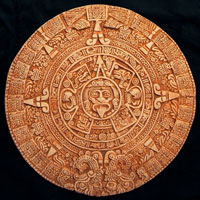
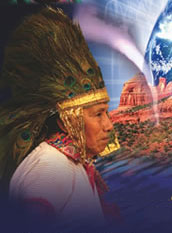
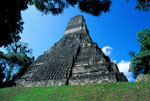
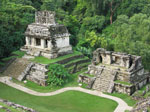
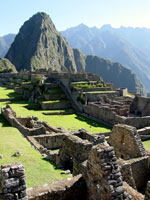




 ,,,etc..."
,,,etc..."